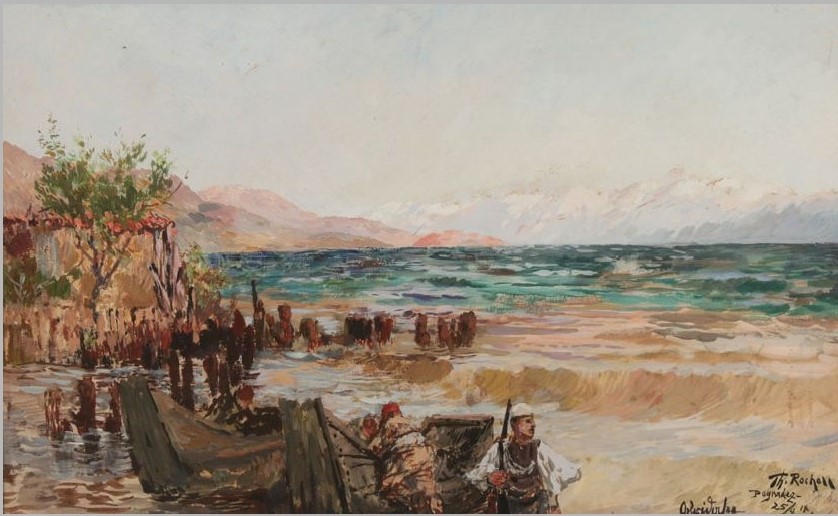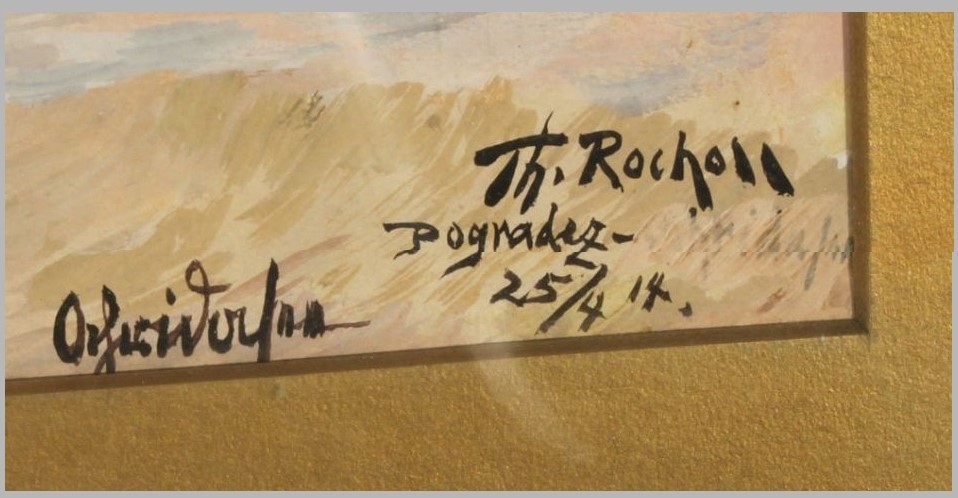Theodor Rocholl is perhaps the most famous German war painter. Born in Saschenberg in 1854, died in a car accident in Dusseldorf in 1933. He was a student in Munich in 1877, then at the Dresden Academy. After a year, he moved to Munich where he studied historical painting under Karl von Piloty. He completed his art studies at the Düsseldorf Academy where he developed his interest in military art under the influence of Wilhelm Camphausen. His contemporaries in this field were Carl Röchling and Richard Knötel. The artist observed the Franco-Prussian War and the subsequent German army maneuvers between 1883 and 1888. In 1890, he traveled to Russia to view the German Garde-Korps on maneuver. Later in the decade, he was attached to the Turkish Army and covered the conflict in Thessaly in 1897 between the Turks and the Greeks; his sketches of the fighting were published the following year. He covered the Boxer Rebellion in 1900 as the official artist of the German expeditionary force. A decade later, he covered the fighting between Turkey and Albania. Many of his paintings depict German military scenes, especially the battles of the Franco-Prussian War. In his 60th year, he became a war artist covering the campaign on the Western Front. His War Letters printed in 1916 in which he described the fear and destruction. An autobiography of his life as a painter appeared in 1921.
In the book “Lexicon der Dusseldolfer Mallerschule” it is written that Theodor Rocholl visited Macedonia and Albania in 1914 as a military artist. One of the paintings from his Macedonian period is the painting entitled: “Ohrid lake – Pogradec 1914”, sold by the auction house Pluckbaum, Bonn, Germany (lot number 1908) on 13.03.2010.

